sx blog
Our digital space for brief commentary and reflection on cultural, political, and intellectual events. We feature supplementary materials that enhance the content of our multiple platforms.
David Scott and Jason Allen-Paisant in Conversation
David Scott and Jason Allen-Paisant in Conversation
Last April, David Scott engaged with Jason Allen-Paisant, winner of the T.S. Eliot Prize for his collection Self-Portrait as Othello.
You can watch the recording below and read more about the event at the website for the Institute for Ideas and Imagination where the conversation took place.
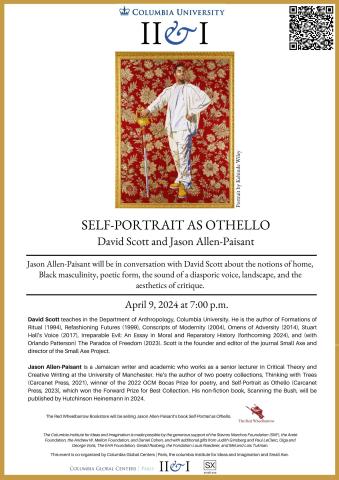
Specters of Fanon: A conversation between Adam Shatz, David Scott and Juan Gabriel Vásquez
Specters of Fanon: A conversation between Adam Shatz, David Scott and Juan Gabriel Vásquez
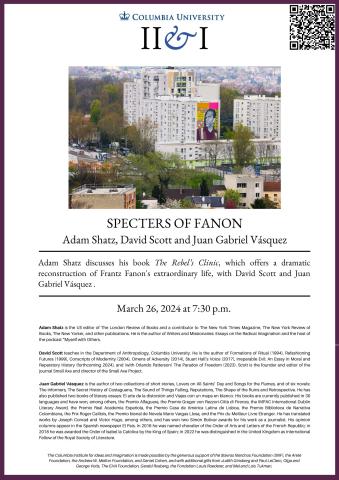
On March 26 of this year, Adam Shatz, David Scott and Juan Gabriel Vásquez sat down at the Institute for Ideas & Imagination in Paris to discuss the legacy of Frantz Fanon as it is introduced in Shatz's latest book, The Rebel's Clinic.
You can find a recording of the conversation below. Read more about the event here.
Language, Patería, Jayaera, and Contemporary Queer and Trans Performance in Puerto Rico
Lawrence La Fountain-Stokes
Language, Patería, Jayaera, and Contemporary Queer and Trans Performance in Puerto Rico
Lawrence La Fountain-Stokes

Patería is a fierce Puerto Rican (and, more broadly, Hispanic Caribbean) Spanish-language vernacular synonym for queerness as a sign of gender and sexual transgression. It goes well beyond the meanings of homosexualidad (homosexuality), costumbre afeminada (effeminate custom), and cualidad propia de algunos homosexuales (proper characteristic of some homosexuals) as registered in the Tesoro lexicográfico del español de Puerto Rico. It invokes stigmatized and resignified LGBTQIA+ local language practices that coexist in tension with the modernity, paradoxes, and challenges of other terms in English and Spanish—for example, mariconería, translocura, faggotology, sissy, and jayaera—and connects with other more recent terms such as perreo combativo (combative perreo) and patería combativa (combative patería), as Arnaldo Cruz-Malavé has explored in his award-winning article “Dancing in an Enclosure: Activism and Mourning in the Puerto Rican Summer of 2019,” which appeared in Small Axe in 2022. Its queer meanings hint toward fabulosity and scandal, the reigning status of a queen, and the subversion of radically liberated individuals but also toward insults and pain, which leads some people to avoid it.
Patería is a useful word to discuss contemporary Puerto Rican queer performance, particularly given the resurgence of virulent hatred and bias against queer people, transgender individuals, and drag queens and the longstanding persistence of misogyny, colonialism, and precarity. Patería helps to frame the linguistic and cultural specificity of the queer Puerto Rican singer and performer Macha Colón’s lyrics and videos—for example, for her 2012 song “Jayá.” Here, the state of jayaera (self-realization) serves as a vernacular, creolized variation of hallarse, or of finding oneself in the collective act of constituting community: a type of utopian patería, of a future yet to come.
Patería is also a useful framework to understand Macha Colón’s generational colleague and friend Eduardo Alegría and his 2004 song “Farifo,” recorded with the band Superaquello for the album Bien Gorgeous. Farifo is an uncommon Puerto Rican term for queer, effeminate, or weak men, as the Puerto Rican cultural critic Gilberto Blasini points out in his 2007 essay “¡Bien Gorgeous! The Cultural Work of Eduardo Alegría,” which appeared in CENTRO Journal. The lyrics of the song never mention the term farifo, which is defined as “afeminado” (effeminate man) in the Tesoro lexicográfico del español de Puerto Rico. Rather, the song presents the tension between the words pato and gay, which results in a triangulation of terms, some functioning as central (pato), one as an ideal (gay), and another as a type of explicit unconscious (farifo); Blasini describes this as a “metonymical replacement.”
Patería takes an unexpected turn in Villano Antillano’s extraordinary 2020 song and video “Pájara,” which proves the continuing interest in exploring and challenging local vernacular language related to queer stigma. The video was produced before the artist started to publicly self-identify as trans and serves as a transitional piece with an exploration of masculinity and femininity. As the liner notes for the video on YouTube indicate, this song is an open rebuttal and inversion of stigma, proposing a community-led process of linguistic resignification in which the singer self-identifies as “pájara” (female bird, faggot), identifying “lo cuir” (queerness) as revolutionary.
Finally, patería is also all about the centrality, transformation, and celebration of the cuir body. Ana Macho’s extraordinary 2021 song and video “Cuerpa” offers an empowering resignification of language, feminizing the Spanish-language term “cuerpo” as a sign of difference and politicized alterity. Here, Macha Colón’s jayaera achieves stunning new complexity and valence. “Cuerpa” celebrates a heterogeneity of bodies and genders as it embraces complex scenarios in Puerto Rico, whether it is at the beach, at Paseo de Diego in Río Piedras, or at El Hangar in Santurce, a radical space of queer, cuir, and trans of color worldmaking. Ana Macho invites us to embrace our cuerpas as we negotiate the contradictions and joys of patería and jayaera.
Read Lawrence La Fountain-Stokes's full essay, "Patería and Contemporary Puerto Rican Queer/Trans Performance," in Small Axe 74, July 2024.
Author bio
Lawrence La Fountain–Stokes is a professor of American culture, Romance languages and literatures, and women’s and gender studies at the University of Michigan, Ann Arbor. He is the author of Queer Ricans: Cultures and Sexualities in the Diaspora (2009), Escenas transcaribeñas: Ensayos sobre teatro, performance y cultura (2018), and Translocas: The Politics of Puerto Rican Drag and Trans Performance (2021). His books of fiction include Uñas pintadas de azul / Blue Fingernails (2009) and Abolición del pato (2013).
"EL OCIO DESMEDIDO" : Excessive Leisure and Ecological
Destruction on Puerto Rico’s Coasts
"EL OCIO DESMEDIDO" : Excessive Leisure and Ecological
Destruction on Puerto Rico’s Coasts
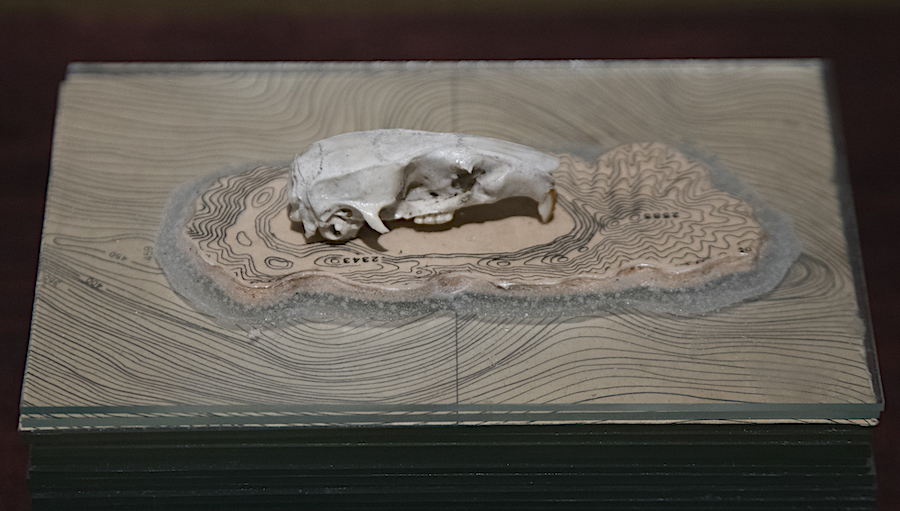
Dhara Rivera, Habitante. 2019. Mixed media. Collection of the artist. Image courtesy of the artist. Photograph by
Javier Del Valle (Galería Fundación Angel Ramos, February 15, 2019).
An Interview with Dhara Rivera
by Charlotte Rogers
Charlotte Rogers: Your 2019 installation Abra Paisaje features Cayo Aurora, more popularly known as Guilligan’s Island, a small island off the southern coast of Puerto Rico that has been a popular day trip for snorkeling and barbecues among school groups, tourists, and locals on vacation. In 2018, the island was overrun by rats attracted to the animal bones and other refuse left by visitors and had to close for fumigation, a circumstance you allude to in pieces like Habitante in the Abra Paisaje installation. How did you decide to make art about Guilligan’s Island?
Dhara Rivera: The way I work is never linear but rather tied to personal experience. I often approach a topic from an affective perspective, when I feel a certain attraction, curiosity, or fascination. I had visited Guilligan’s island for many years and I saw how it changed from a rarely visited place to one used and abused by too many visitors. The quantity of human visitors was overwhelming the island. On a visit in 2017, I found the bones of rats mingled with the dried corals among the mangrove roots. I was shocked by the huge number of bones mixed in and camouflaged by the rest of the ecosystem. It made me understand how profoundly we are changing the archaeological, anthropological, biological, and geographical reality of the island. That’s where the piece began. It sparked my research into “el ocio desmedido,” or the excessive leisure that verges on destruction of the environment.
"...we are changing the archaeological, anthropological, biological, and geographical reality of the island."
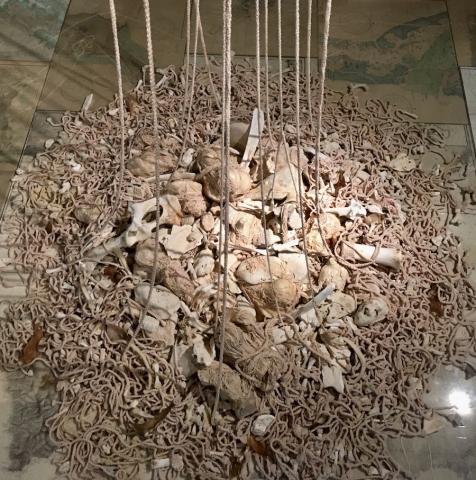
Dhara Rivera, Abra paisaje, 2019. Mixed media. Collection of the artist. Image courtesy of the artist. Photograph by Javier Del Valle. (Galería Fundación Angel Ramos, February 15, 2019).
CR: The Spanish-language title of the installation, Abra Paisaje, can be interpreted in multiple ways, both as “Open, Landscape” as in “Open, Sesame” and “Will There Be a Landscape?” What possibilities does this title open up for the viewer of the exhibition?
DR: The title opens up many possibilities. My work always raises questions and sparks curiosity; the word “abra” seeks to open up a conversation. On the other hand, I wanted to play with language a bit, so the question “¿habrá paisaje?” depends on having someone or something look at the landscape, to see it. So the title asks the question, “who will be there and who will not?” It’s a bit like the ending of the Werner Herzog film Cave of Forgotten Dreams (2011), in which lizards are left in the cave after the humans have gone.
CR: Unlike a lot of didactic or apocalyptic art about waste and human-induced climate change, Abra Paisaje uses bright colors and has a playful, ambiguous tone. Why do you approach climate catastrophe in this way?
DR: I like to walk the line between the playful and the apocalyptic, instead of opting for one or the other. I stay on that knife-edge or balance beam, because the piece is both attractive and terrifying, terrible and marvelous; the world is made up of the dynamics. My work is fascinated by the complexity of life beyond the human. We can’t see our situation as just the end of the world, but also as an opportunity to perceive the beauty of life beyond the human.
CR: In January of 2020, a 6.4 magnitude earthquake and its aftershocks hit Guánica, leveling homes and school buildings in the south of Puerto Rico and compounding the damage done by 2017’s Hurricane
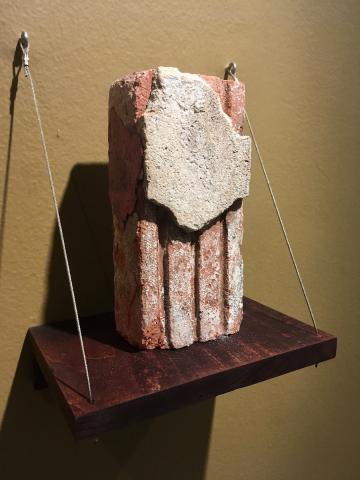
Dhara Rivera, bbc, 2019. Mixed media. Collection of the artist. Image courtesy of the artist. Photograph by Javier Del Valle. (Galería Fundación Angel Ramos, February 15, 2019).
María, from which the island has still not recovered. Guilligan’s Island subsisted during the earthquake, destroying the docks, barbecues, and signage installed by the Department of Natural Resources (DRNA). Much of the island now lies several meters underwater, still visible but inaccessible to humans. The once-frequent ferry service from the mainland has ceased operations. Do you feel that Abra Paisaje in some way anticipates the new configuration of Guilligan’s island? How might the piece and the new ecology of Guilligan’s speak differently to an audience now in comparison to 2019?
DR: Now what we have is evidence of the lasting effects of some many thousands of people going to Guilligan’s. Seeing the barbeque grills underwater is a teachable moment, for sure. But in 2019 the piece already anticipated this moment in which the island would no longer have a human presence. I think it is useful to see ourselves from a hypothetical future perspective in which we are no longer damaging our surroundings. It raises the possibility of a recuperation for the ecosystem.
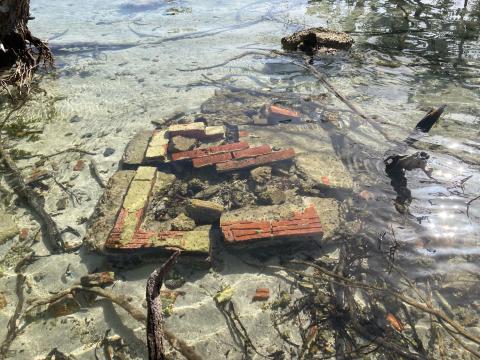
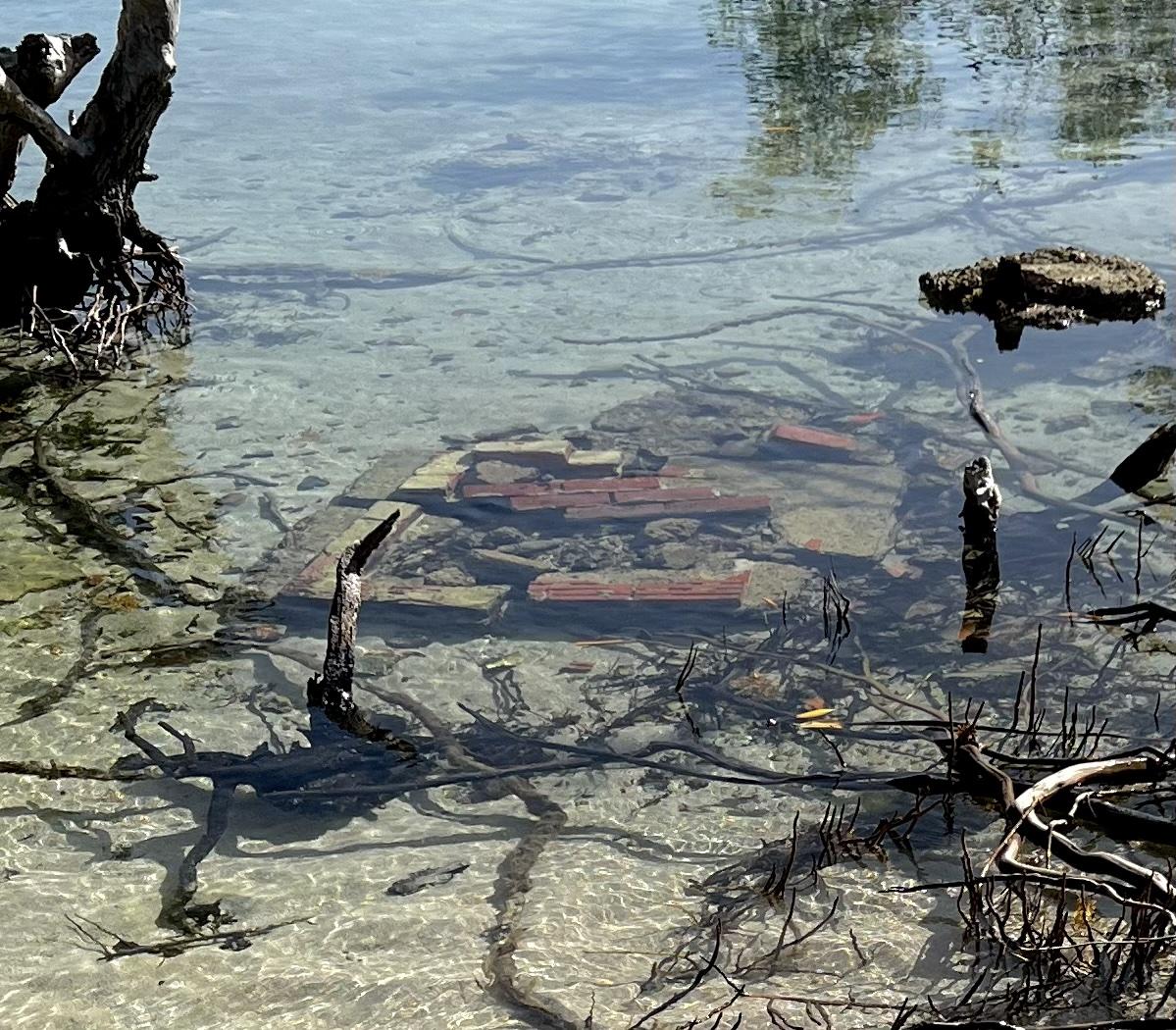
Submerged bbq grills at Guilligan’s Island, detail. Image courtesy of the artist.
Submerged bbq grills at Guilligan’s Island. Image courtesy of the artist.
Abra Paisaje (2019) was first exhibited at the Galería SalaFAR. The central piece in the installation was purchased by the Instituto de Cultura Puertorriqueña in 2022. A selection of works from the installation is currently on display at the Museum of Arte de Puerto Rico.
Read more about Dhara Rivera's work in Charlotte Rogers, "A Multispecies Caribbean: The Aesthetics of Ecological Reinvention in Art by Dhara Rivera." Small Axe 73, March 2024.
Artist and Author Bios
Dhara Rivera is a multimedia artist living and working in Puerto Rico. She holds Bachelor degrees in Humanities and Sculpture from the University of Puerto Rico (UPR) and Pratt Institute in New York. She graduated from Hunter College with a Masters Degree in Sculpture and later, she completed the first year of doctoral studies in the Public Space and Art Program of the University of Barcelona, Spain. Over the last two decades Rivera’s work has focused on bodies of water and their place in society. Her work takes a poetical approach to interweaving social, political, and historical aspects into each of her ecological art projects.
Charlotte Rogers is Associate Professor of Spanish at the University of Virginia. She specializes in twentieth- and twenty-first-century Latin America and the Caribbean, with a comparative focus on representations of the tropics in literature, art, and culture. She is the author of Jungle Fever: Exploring Madness and Medicine in Twentieth-Century Tropical Narratives (Vanderbilt University Press, 2012) and Mourning El Dorado: Literature and Extractivism in the American Tropics (University of Virginia Press, 2019). Mourning El Dorado received Honorable Mention in the Latin American Studies Association Amazonia section Best Book Prize competition in 2020. Her articles appear in journals including PMLA, ISLE: Interdisciplinary Studies in Literature and the Environment, Revista de Estudios Hispánicos, Bulletin of Hispanic Studies, Hispania, MLN and the Revista Canadiense de Estudios Hispánicos. She serves on the Editorial Boards of ISLE of the Revista de Estudios Hispánicos.
In Memory of Maryse Condé (11 February 1934--2 April 2024)
In Memory of Maryse Condé (11 February 1934--2 April 2024)
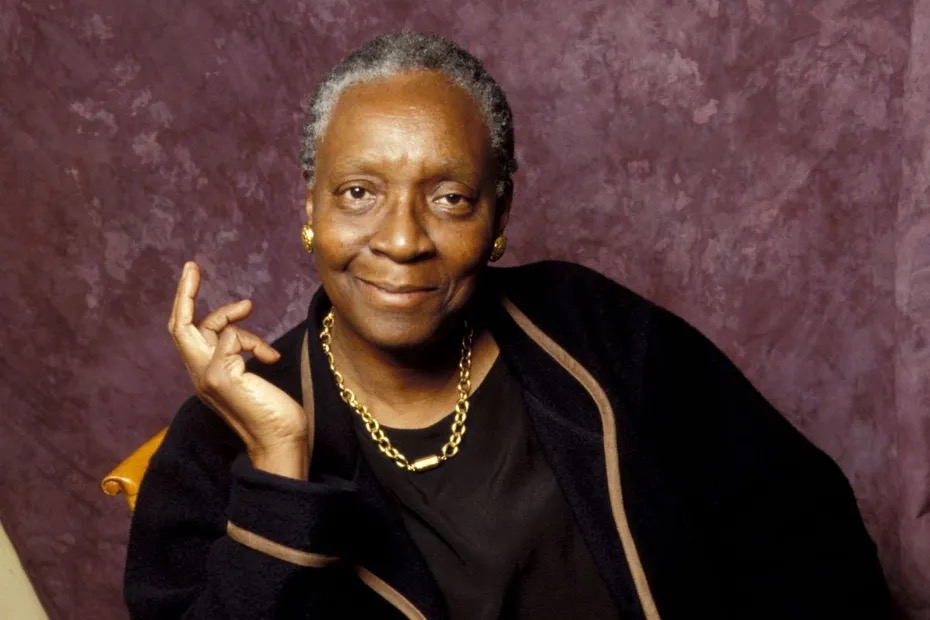
It is with deep sorrow that the Small Axe Project notes and tries to digest the passing of the Guadeloupean writer Maryse Condé (11 February 1934--2 April 2024). Novelist, essayist, playwright, critic, teacher, and more besides, she was a formidable and incisive thinker and an elegant composer of pages of prose. Across an extraordinary body of work, including such unforgettable books as Ségou (1984, 1985), and Moi, Tituba ... Sorcière de Salem (1986), she mined the gendered character of the historical trauma of the African diasporic condition. Significantly, Condé belonged to a generation of Caribbean intellectuals and artists whose direct experience of the African continent (Guinea, Côte d'Ivoire, Ghana) was formative for their moral-political sense of post-emancipation Black presents in the Americas. One only has to read her memoirs, Le cœur à rire et à pleurer : souvenirs de mon enfance (1999), and La Vie sans fards (2012). She will be missed by us all, those who knew her, and those who didn't. Bon voyage Madame Condé.
Photo of Maryse Condé Copyright Matsas Leemage-Hollandse Hoogte
David Scott's Latest Book Is Out: Irreparable Evil: An Essay in Moral and Reparatory History (2024)
David Scott's Latest Book Is Out: Irreparable Evil: An Essay in Moral and Reparatory History (2024)
David Scott's latest book, Irreparable Evil, asks what was distinctive about the evil of the transatlantic slave trade and New World slavery? In what ways can the present seek to rectify such historical wrongs, even while recognizing that they lie beyond repair?
David Scott reconsiders the story of New World slavery in a series of interconnected essays that focus on Jamaica and the Anglophone Caribbean. Slavery, he emphasizes, involved not only scarcely imaginable brutality on a mass scale but also the irreversible devastation of the ways of life and cultural worlds from which enslaved people were uprooted. Colonial extraction shaped modern capitalism; plantation slavery enriched colonial metropoles and simultaneously impoverished their peripheries. To account for this atrocity, Scott examines moral and reparatory modes of history and criticism, probing different conceptions of evil.
Irreparable Evil is available for purchase here.
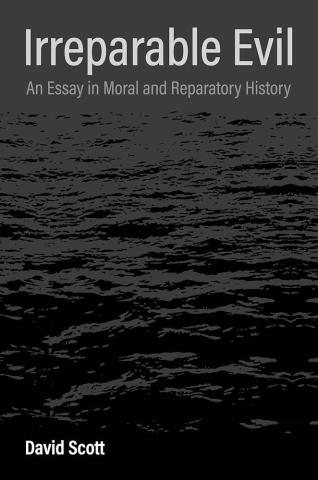
Check out the conversation between David Scott and Eric Schwartz about the release as a part of the Library Chat series at the Columbia Institute for Ideas and Imagination below.
In Honor of Edward Baugh (1936-2023)
In Honor of Edward Baugh (1936-2023)
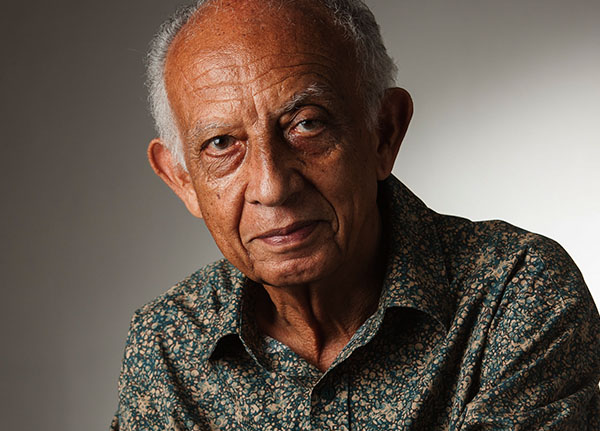
Photo taken from the American Academy Society of Arts and Sciences website
We in the Small Axe Project join many, in Jamaica and the world over, in mourning the passing of Edward Baugh who died on 9 December 2023 at the age of 87. Eddie, as he was fondly known, was a legend in the arena of Caribbean letters: a lyrical poet of great subtlety, a measured critic of historical sensibility, and a memorable voice as a Public Orator. But more than these, what we will most remember when we remember him, is the quality of his urbane presence, at once cosmopolitan in width and complexity and profoundly rooted in his Jamaican (and Caribbean) commitments. He was the best of us, and we will miss him. Walk good Eddie.
Too Much History, or Not Enough
Contexts, Criticism, and Quarrels: A Reflection on Edward Baugh's “The West Indian Writer and His Quarrel with History”
Reflections on “The Quarrel with History”
Congratulations to Belinda Edmondson
Congratulations to Belinda Edmondson

Congratulations to Belinda Edmondson whose book Creole Noise: Early Caribbean Dialect Literature and Performance won The Aldo and Jeanne Scaglione Prize for African Studies awarded annually by the Modern Language Association!
You can read the essays from the book discussion on Creole Noise in sx 72 here.
Nuevos títulos de Editora Educación Emergente (EEE) / New Titles from Editora Educación Emergente (EEE)
Nuevos títulos de Editora Educación Emergente (EEE) / New Titles from Editora Educación Emergente (EEE)
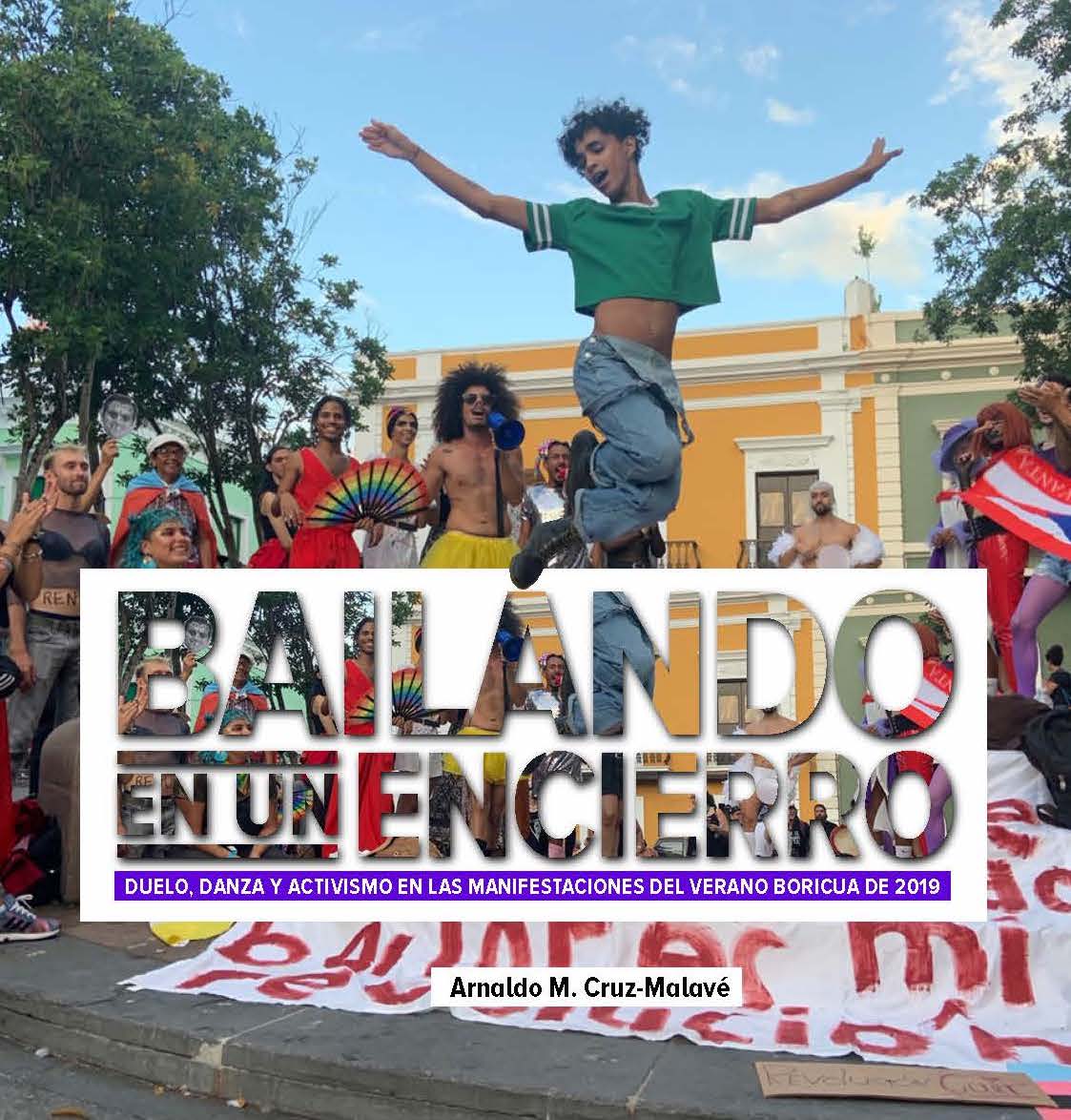
Editora Educación Emergente (EEE), proyecto editorial independiente, arbitrado y de pequeña escala, fundado en 2009 y con base en Cabo Rojo, Puerto Rico, presenta al amplio y diverso público caribeño sus títulos más recientes.
Editora Educación Emergente (EEE), a small-scale, peer-reviewed, and independent publisher established in 2009 in Cabo Rojo, Puerto Rico, is proud to announce the release of its most recent titles to the Caribbean’s ample and diverse reading public.
Será otra cosa (2016-2022)

Autoras / Authors: Rima Brusi-Gil de Lamadrid, Sofía Irene Cardona, Beatriz Llenín Figueroa, Mari Mari Narváez, Ana Teresa Pérez-Leroux, Vanessa Vilches Norat, Claudia Becerra y Zahira Cruz Gómez
Serie / Series: Crónica otra
Descripción / Description:
Colección de textos recientes en prosa de diversas autoras y, originalmente, publicados en la sección “Será otra cosa” del periódico semanal puertorriqueño Claridad.
Collection of recent prose texts by diverse women authors and originally published in the Será otra cosa section of the Puerto Rican weekly newspaper Claridad.
Bailando en un encierro: duelo, danza y activismo en las manifestaciones del Verano Boricua de 2019

Autor / Author: Arnaldo M. Cruz-Malavé
Serie / Series: reVolucionA
Descripción / Description:
Ensayo sobre el Verano Boricua de 2019 con especial atención al vínculo entre la corpo-política del baile, la calle y el duelo. Originalmente publicado en inglés en la revista Small Axe y traducido al español por su autor.
Essay on the 2019 Verano Boricua paying special attention to the link between the body-politics of dance, street and mourning. Originally published in English in the Small Axe journal and translated to Spanish by the author.
La piedra es una sombra que da vida: prosa selecta (2017-2022)

Autora / Author: Beatriz Llenín Figueroa
Serie / Series: Crónica otra
Descripción / Description:
Colección de textos recientes en prosa sobre la condición sociopolítica de las islas puertorriqueñas, sus ecosistemas y su animalia.
Collection of recent prose texts on the sociopolitical condition of the Puerto Rican islands, their ecosystems and their animals.
4645: crónica del Verano Boricua (con Coda añadida)

Autor y traductor / Author and Translator: Christopher Powers Guimond
Serie / Series: reVolucionA
Descripción / Description:
Crónica sobre el Verano Boricua 2019 –en el que Powers Guimond y su familia participaron activamente– traducida al español por su autor e incluyendo una nueva Coda.
Chronicle on the 2019 Verano Boricua –where Powers Guimond and his family actively participated– translated to Spanish by its author and including a new Coda.
Huerto de papel: ABC para una educación agroecológica inclusiva

Autora e ilustradora / Author and Illustrator: Paola A. González Santiago
Serie / Series: Otra escuela
Descripción / Description:
Abecedario y varios recursos para la enseñanza y el aprendizaje agroecológicos e inclusivos.
Alphabet and several resources for agroecological and inclusive teaching and learning practices.
Diásporas decolonizadoras: cartografías radicales de literaturas Afroatlánticas

Autora / Author: Yomaira C. Figueroa-Vásquez
Traductora / Translator: Beatriz Llenín Figueroa
Serie / Series: Otra universidad
Descripción / Description:
Estudio de textos literarios y otras manifestaciones culturales del mundo Afroatlántico marcado por la colonización española, incluyendo a Guinea Ecuatorial, el Caribe hispanohablante y sus diásporas.
Book-length study on literary texts and other cultural works from the Afroatlantic world marked by Spanish colonization, including Equatorial Guinea, the hispanophone Caribbean, and its diasporas.
De la brevedad de las formas: escritos sobre cultura, poder y lenguaje

Autor / Author: Dennis Alicea
Serie / Series: Otra universidad
Descripción / Description:
Colección de ensayos en formas breves sobre debates filosóficos, culturales y lingüísticos desde Puerto Rico como locus de enunciación.
Collection of essays in brief forms on philosophical, cultural, and linguistic debates from Puerto Rico as its place of enunciation.
Páramos del amor: escrituras del VIH y sida en la literatura puertorriqueña

Autor / Author: Daniel Torres Rodríguez
Serie / Series: Queer.y
Descripción / Description:
Texto crítico y breve muestra antológica de poesía puertorriqueña sobre el VIH y sida, incluyendo comentarios sobre textos de Manuel Ramos Otero, Víctor Fragoso, Alfredo Villanueva Collado, Moisés Agosto-Rosario, Joey Pons, Ángel Lozada y Eïrïc R. Durändal Stormcrow, así como de piezas visuales seropositivas de Nelson Millán.
Critical study and brief anthological sample of Puerto Rican poetry on HIV and AIDS, including commentary on texts by Manuel Ramos Otero, Víctor Fragoso, Alfredo Villanueva Collado, Moisés Agosto-Rosario, Joey Pons, Ángel Lozada, and Eïrïc R. Durändal Stormcrow, as well as on seropositive visual pieces by Nelson Millán.
Voces en el matorral: otro Poblado

Autor / Author: Eduardo Alegría
Serie / Series: Otra escena
Descripción / Description:
Libro que reúne varios textos e imágenes sobre la escena musical independiente en Puerto Rico y, específicamente, sobre el trabajo reciente de la banda Alegría Rampante y su fundador, Eduardo Alegría, con énfasis en la producción del disco Poblado.
This book includes various texts and images on the Puerto Rican independent music scene, and, specifically, on the recent work of the Alegría Rampante band and its founder, Eduardo Alegría, with an emphasis on the production process of their disc Poblado.
quienes tajan mar: registro de una práctica artística andariega

Autora / Author: Teresa Hernández
Serie / Series: Otra escena
Descripción / Description:
Libro-registro sobre el trabajo transdisciplinario (performance-teatro-danza-vídeo) de Teresa Hernández en años recientes como parte de su plataforma de investigación y creación artística, Bravatas, que gira en torno a las múltiples formas de erosión (histórica, económica, política, corporal, costera…) que se experimentan en Puerto Rico.
Book-register on Teresa Hernández’s transdisciplinary work (performance-theater-dance-video) in recent years as part of her artistic research and creation platform, Bravatas (Sea Swells), which revolves around the multiple forms of erosion (historical, economic, political, bodily, coastal…) that are experienced in Puerto Rico.
Observatorio de lagunas

Autora / Author: Sofía Gallisá Muriente
Serie / Series: Otra escena
Descripción / Description:
Libro que reúne textos e imágenes vinculadas a Observatorio de lagunas, proyecto de investigación y creación artística de la artista visual Sofía Gallisá Muriente en torno a las dinámicas de memoria y desmemoria en Puerto Rico y su relación con la larga historia de colonización del país.
Book that includes texts and images related to Observatorio de lagunas (Observatory of Lagoons), an artistic research and creation project by the visual artist Sofía Gallisá Muriente concerning the dynamics of what is remembered and forgotten in Puerto Rico, and their relationship with the country’s longstanding history of colonization.
coreografías del weather, o el clima también es rumor (bilingual edition)

Autora / Author: nibia pastrana santiago
Traductora / Translator: Beatriz Llenín Figueroa
Serie / Series: Otra escena
Descripción / Description:
Libro que reúne reflexiones e imágenes sobre el trabajo de investigación y creación en danza de la artista nibia pastrana santiago a partir de su indagación sobre el clima y la crisis climática, la geografía del archipiélago y el cuerpo.
This book includes reflections and images on the research and creative work in dance by artist nibia pastrana santiago concerning the weather, the climate crisis, the archipelagic geography and the body.
¡Juntes por la justicia climática! / Together for Climate Justice!

Autorxs / Authors: Muchas personas / Many People
Serie / Series: Otra escuela
Descripción / Description:
Este libro cuenta la historia de Maya y su viaje con varias personas jóvenes para aprender sobre la justicia climática, la justicia migratoria, el racismo ambiental y el Fuego Cultural Indígena.
This book tells the story of Maya and her journey alongside several young people to learn about climate justice, migrant justice, environmental acismo, and Indigenous Cultural Fire.
Borinquen Field

Autora / Author: Marta Aponte Alsina
Serie / Series: Edades de Siddhartha
Descripción / Description:
Novela sobre Borinquen Field, nombre original de la base militar estadounidense Ramey, construida en la costa de Aguadilla tras el desplazamiento de la población local.
A novel on Borinquen Field, original name for the US Ramey military base, built on the coast of Aguadilla after the displacement of the local population.
La niña y la mosca

Autora / Author: Ileana Contreras Castro
Ilustradora / Illustrator: Vicky Ramos
Serie / Series: Otra escuela
Descripción / Description:
Este es el relato de la amistad entre la niña Engracia y la mosca Pandora. Este libro sólo está disponible en formato e-book por el momento.
This is the story of the friendship between Engracia, the girl, and Pandora, the fly. This book is only available in e-book format for now.
Join us for a conversation with Vanessa Pérez-Rosario and Roque Raquel Salas Rivera
Join us for a conversation with Vanessa Pérez-Rosario and Roque Raquel Salas Rivera
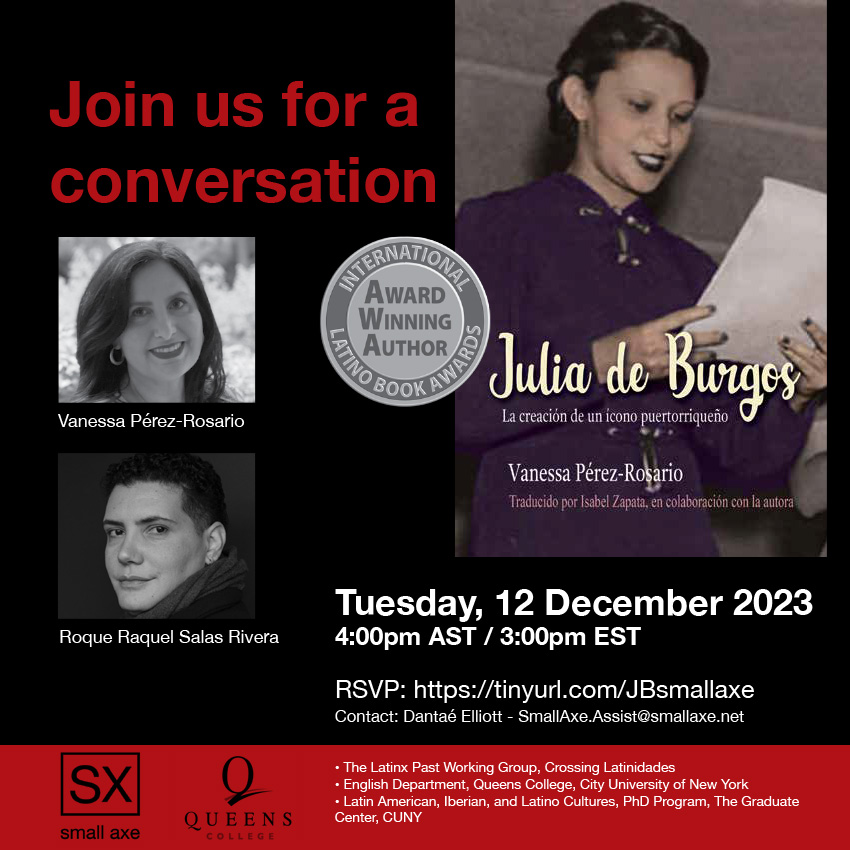
The Spanish edition of Julia de Burgos: La creación de un ícono puertorriqueño (University of Illinois Press, 2022), written by Vanessa Pérez-Rosario and translated by Isabel Zapata has received a silver award for best Latina themed book, and honorable mention, Dolores Huerta best cultural and community themed book in the 25th International Latino Book Awards, 2023 competition. Join us for a conversation with the author and award-winning poet and translator, Roque Raquel Salas Rivera. They’ll talk about poetry, translation, and the enduring legacy of Julia de Burgos. Join us!
Register for the event here.
The book is available for purchase in Puerto Rico at Librería Laberinto, just follow this link.
The book can be ordered directly from the University of Illinois Press here.
Contact:
Dantaé Elliott
SmallAxe.Assist@smallaxe.net
Co-sponsors
The Latinx Past Working Group, Crossing Latinidades
English Department, Queens College, City University of New York
Latin American, Iberian, and Latino Cultures, PhD Program, The Graduate Center, CUNY
Speaker bios
Vanessa Pérez-Rosario is a translator and professor of English at Queens College and professor of Latin American, Iberian, and Latino Cultures at the Graduate Center, CUNY. She is the author of Becoming Julia de Burgos: The Making of a Puerto Rican Icon (2014). The Spanish edition of this book, Julia de Burgos: la creación de un ícono puertorriqueño(2022) translated by Isabel Zapata, garnered the silver medal from the International Latino Book Award 2023. She is editor of Hispanic Caribbean Literature of Migration: Narratives of Displacement (Palgrave 2010) and translator of Boat People (2021) by Mayra Santos-Febres, which received honorable mention for the International Latino Book Award 2023. Her critical edition titled “I Am My Own Path: Selected Writings of Julia de Burgos” is forthcoming with the University of Texas Press, 2024. She is managing editor of Small Axe: A Caribbean Journal of Criticism.
Roque Raquel Salas Rivera (Mayagüez, 1985) is a poet, editor and translator. His honors include being named Poet Laureate of the City of Philadelphia, the New Voices Award, and the inaugural Ambroggio Award. He is the author of six collections of poems. He is the editor of the anthologies Puerto Rico en mi corazón (Anomalous Press, 2019) and La piel del arrecife: Antología de poesía trans puertorriqueña (La Impresiona & Atarraya Cartonera, 2023). Among his translations, he has The Rust of History (Circumference Press, 2022), a selection of the poetic work of his grandfather Sotero Rivera Avilés, and The Book of Conjurations by the poet Irizelma Robles. He is currently writing a trans epic poem titled Algarabía, which will be published in 2025 by Graywolf Press.
Vanessa Pérez-Rosario es traductora y profesora de inglés en Queens College y profesora en el programa doctoral de Latin American, Iberian, and Latino Cultures en el Graduate Center, CUNY. Es autora de Becoming Julia de Burgos: The Making of a Puerto Rican Icon (2014). La edición en español de este libro, Julia de Burgos: la creación de un ícono puertorriqueño (2022) traducida por Isabel Zapata, obtuvo la medalla de plata del International Latino Book Award 2023. Es editora de Hispanic Caribbean Literature of Migration: Narratives of Displacement (2010) y traductora de Boat People (2021) de Mayra Santos-Febres, que recibió mención de honor en el International Latino Book Award 2023. Próximamente se publicará su edición crítica titulada “I Am My Own Path: Selected Writings of Julia de Burgos”con University of Texas Press, 2024. Es editora en jefe de Small Axe: A Caribbean Journal of Criticism.
Roque Raquel Salas Rivera (Mayagüez, 1985) es un poeta, editor y traductor. Sus reconocimientos incluyen el nombramiento como Poeta Laureado de la ciudad de Filadelfia, el Premio Nuevas Voces y el inaugural Premio Ambroggio. Cuenta con seis poemarios. Es el editor de las antologías Puerto Rico en mi corazón (Anomalous Press, 2019) y La piel del arrecife: Antología de poesía trans puertorriqueña (La Impresora & Atarraya Cartonera, 2023). Entre sus traducciones, cuenta con The Rust of History (Circumference Press, 2022), una selección de la obra poética de su abuelo Sotero Rivera Avilés, y The Book of Conjurations de la poeta Irizelma Robles. Al presente escribe un poema épico trans titulado Algarabía, que será publicado en el 2025 por Graywolf Press.